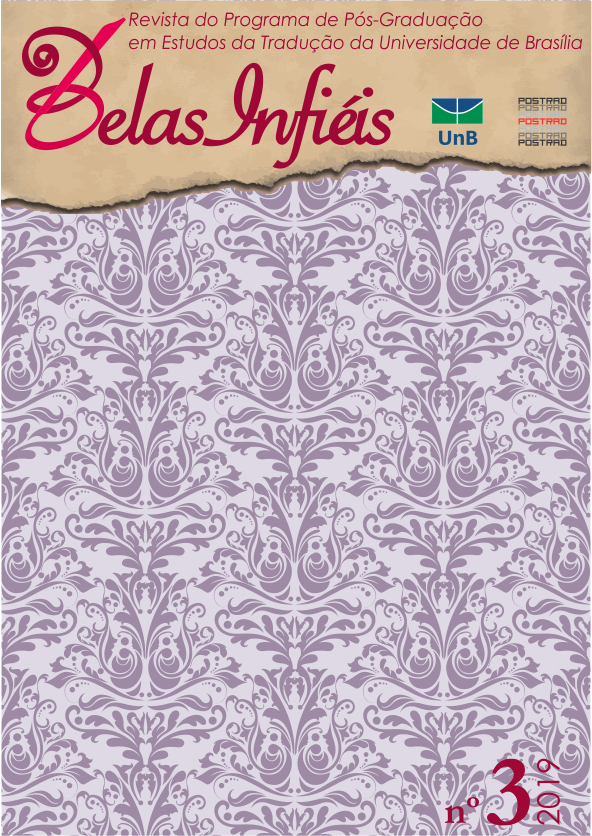Who are you, Maria dear? The reception of "Girls at the window", a translation of "As meninas" (Cecília Meireles) by children in England
DOI:
https://doi.org/10.26512/belasinfieis.v8.n3.2019.23630Keywords:
Translation Studies. Translation of Children's Literature. Think Aloud in Group. Cecília Meireles. Poetry for childrenAbstract
Translators of poetry ideally seek to re-create, in the target poem, the same poetic features seen in the source poem (metric, phonetic, prosodic, and semantic features). But in practice, we have to choose which features will take priority, since "correspondence on all levels, with no loss, is rarely possible in poetic translation" (Britto, 2002). We often wonder to what extent the changes, cuts or additions made regarding form (meter or rhymes, for instance) will interfere in the interpretation of the target poem. Concerning poetry for children, there is an extra challenge that adds to our wonder: the asymmetrical relationship (maturity, cultural and linguistic baggage) between the child reader and the adult who writes or translates to the child (Azenha, 2008). To reduce asymmetry and to improve the chances of the work being accepted by the target audience, translators should be very attentive of the language in use at the time of the translation (Azenha, 2005), and try to spend some time with same-age children to whom they translate it (Lathey, 2016). Despite Azenha's and Lathey's recommendations, and despite the growing number of research on translation of children's literature in the past thirty years, there are only a handful of studies that take the children's response into account. With this article I intend to contribute to reducing that gap: first, I present my translation into English of the poem "As meninas", originally written in Portuguese by Cecília Meireles, and then submit the results of two sessions of poetry-reading-and-discussion carried out with two different groups of 9 to 10 year-old English-speaking children, who read and discussed the translated poem entitled "Girls at the window". The sessions were held at two different schools in England, following the guidelines of the dialogical and collaborative literacy practice Think Aloud in Group (Zanotto, 2014), to which I also provide a short explanation.
Downloads
Downloads
Published
How to Cite
Issue
Section
License
Given the public access to this journal, the texts are free to use but requires the recognition of the original authorship and initial publication in this journal to be properly stated.
 The journal allows the use of works published for non-commercial purposes, including the right to submit the work to publicly accessible databases. Published contributions are the sole and exclusive responsibility of the author(s).Â



















